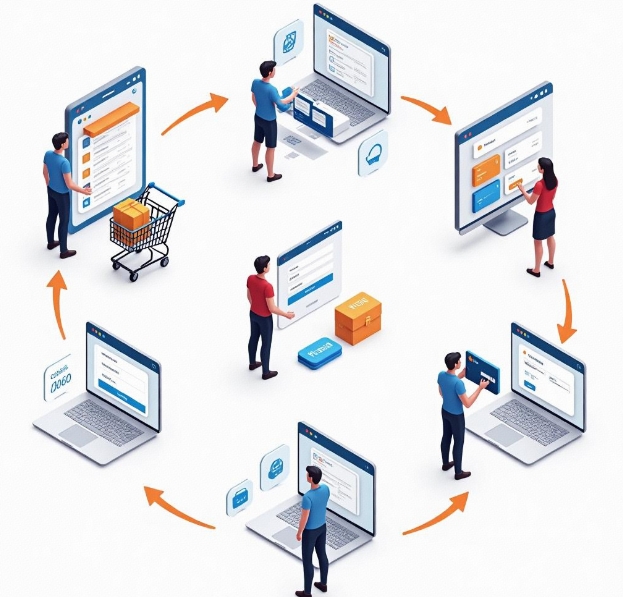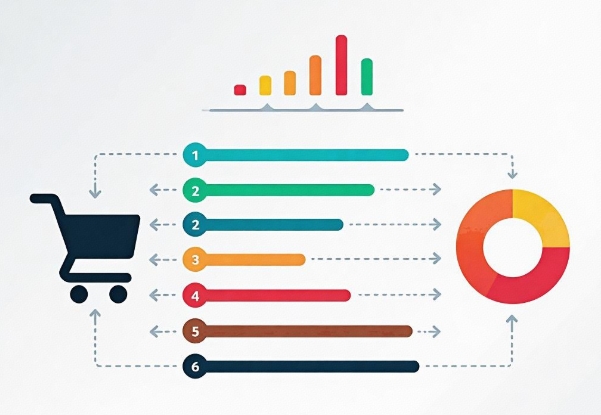Shenzhen Single-User Mall Data Statistics (User Behavior Analysis)
- latest articles
- 1.DApp Development & Customization: Merging Diverse Market Needs with User Experience 2.Analysis of the Core Technical System in DApp Project Development 3.How to achieve cross-chain interoperability in Web3 projects? 4.How does the tokenization of points reconstruct the e-commerce ecosystem? 5.How to Set and Track Data Metrics for a Points Mall? 6.What is DApp Development? Core Concepts and Technical Analysis 7.Inventory of commonly used Web3 development tools and usage tips 8.Development of a Distribution System Integrated with Social E-commerce 9.Six Key Steps for Businesses to Build a Points Mall System 10.What is DApp Development? A Comprehensive Guide from Concept to Implementation
- Popular Articles
- 1.Future Trends and Technology Predictions for APP Development in 2025 2.Analysis of the DeFi Ecosystem: How Developers Can Participate in Decentralized Finance Innovation 3.From Zero to One: How PI Mall Revolutionizes the Traditional E-commerce Model 4.DAPP Development | Best Practices for Professional Customization and Rapid Launch 5.Recommended by the Web3 developer community: the most noteworthy forums and resources 6.From Cloud Computing to Computing Power Leasing: Building a Flexible and Scalable Computing Resource Platform 7.How to Develop a Successful Douyin Mini Program: Technical Architecture and Best Practices 8.Shared Bike System APP: The Convenient Choice in the Era of Smart Travel 9.How to Create a Successful Dating App: From Needs Analysis to User Experience Design 10.From Design to Development: The Complete Process of Bringing an APP Idea to Life
With the rapid development of e-commerce, user behavior analysis has become an important tool for merchants to optimize operations, improve user experience, and enhance sales performance. Especially in fast-growing commercial cities like Shenzhen, the competition among online stores and platforms is increasingly fierce. To stand out among numerous competitors, merchants not only need efficient products and services but also a deep understanding of user needs and behaviors to formulate corresponding marketing strategies.
This article will provide a detailed analysis of data statistics for single-user stores in Shenzhen, focusing on the basic concepts of user behavior analysis, data collection methods, analytical models, and practical applications. By combining real-world cases from Shenzhen's e-commerce platforms, it aims to help merchants and developers better utilize data for decision-making.
I. The Significance of Single-User Store Data Statistics
The core of a single-user store lies in the detailed analysis of each user's behavioral data, helping merchants understand user needs, optimize user experience, and improve conversion rates. Through precise data statistics, merchants can effectively achieve the following goals:
Enhancing User Experience: Personalize product recommendations and optimize interface design based on user behavior habits.
Precision Marketing: Customize targeted marketing strategies by analyzing users' purchase history and browsing habits to improve marketing effectiveness.
Increasing Conversion Rates: Identify conversion bottlenecks and optimize them by tracking user paths.
II. Basic Concepts of User Behavior Analysis
Definition of User Behavior
User behavior refers to a series of activities users perform on a store platform, including but not limited to browsing products, adding to cart, purchasing, reviewing, and searching. By analyzing these behaviors, merchants can understand user needs, interests, and pain points.Types of Behavioral Data
User behavior data is typically categorized into the following types:Page View Data: Frequency of page visits, dwell time, click counts, etc.
Purchase Data: Purchase frequency, transaction amount, product categories, etc.
Search Data: Keywords searched, click-through rates on search results, etc.
Interaction Data: User interactions with other users or merchants on the platform, such as comments and shares.
Data Collection Methods
In practical applications, data collection methods mainly include:Client-Side Collection: Recording data from user operations on mobile or PC devices, such as clicks, swipes, and inputs.
Backend Log Collection: Recording user activity trails through website or app backend logs, including browsing and purchasing.
III. Data Statistics and Analytical Models
To extract valuable insights from vast amounts of data, merchants need to employ statistical models and algorithms for analysis. The following are commonly used data analysis models:
User Profiling
User profiling involves a comprehensive analysis of user basic information and behavioral data to form a multi-dimensional understanding of users. Typically, user profiles include age, gender, interests, purchasing habits, etc. Through user profiling, merchants can more accurately recommend products to different user groups.Association Rule Analysis
Association rule analysis helps merchants discover which products are frequently purchased together by mining associations in user purchasing behavior. For example, "users who buy phones often also buy headphones." Using such association rules, merchants can engage in cross-selling or recommend related products.Path Analysis
Path analysis tracks users' click trails within the store to help merchants identify obstacles and drop-off points in the purchasing process. For instance, if some users add products to their cart but do not complete the purchase, merchants can use path analysis to identify factors affecting conversion and optimize accordingly.A/B Testing
A/B testing is an experimental method that compares the behavior of two user groups to evaluate the effectiveness of different solutions. In e-commerce platforms, A/B testing can be used to optimize webpage design, ad placements, promotional activities, etc. For example, merchants can use A/B testing to verify the impact of different page layouts or promotional content on conversion rates.
IV. Case Study of User Behavior Analysis on Shenzhen E-commerce Platforms
Taking a well-known local e-commerce platform in Shenzhen as an example, this section analyzes how it uses data statistics and behavior analysis in single-user stores to enhance user experience and sales performance.
1. Collection and Processing of User Behavior Data
A Shenzhen e-commerce platform embeds behavior tracking codes in its app and website to collect real-time data on user browsing, searching, and purchasing. This data is processed and analyzed by backend servers, providing merchants with a comprehensive view of user behavior.
2. Personalized Recommendation System
By analyzing users' purchase history and browsing records, the platform can offer personalized product recommendations. For example, after a user buys a phone, the system recommends related accessories like phone cases and headphones. Personalized recommendations not only enhance user experience but also significantly increase the platform's conversion rate.
3. Data Support for Marketing Activities
Shenzhen's e-commerce platforms also use data analysis to support precise marketing activities. For instance, by analyzing users' purchase cycles, the platform can offer birthday coupons to users with upcoming birthdays, increasing their likelihood of participating in promotions.
4. Conversion Rate Optimization
Through path analysis, a Shenzhen platform discovered that many users did not complete purchases after browsing product pages. After further analysis, merchants optimized the layout of product detail pages, simplified the checkout process, and added diverse payment options, successfully increasing the conversion rate.
V. How to Optimize User Behavior Data Analysis
Improve Data Quality
Data accuracy and completeness are prerequisites for effective analysis. Merchants must ensure the accuracy of data collection to avoid distorted analysis results due to missing or erroneous data.Enhance Data Visualization
Data visualization presents complex data in charts, graphs, and other forms, helping merchants quickly identify issues and make decisions. For example, using heatmaps to display user click hotspots on webpages or funnel charts to illustrate user conversion processes.Real-Time Analysis and Feedback
In the highly competitive e-commerce market, merchants need to monitor and analyze user behavior in real time to respond quickly to market changes. Through real-time data analysis, merchants can promptly adjust marketing strategies and operational plans.
VI. Conclusion
As China's hub for technological innovation, Shenzhen's e-commerce industry is developing rapidly and facing intense competition. In this environment, single-user store data statistics and user behavior analysis have become crucial tools for merchants to optimize operations and boost sales. Through detailed analysis of user behavior, merchants can gain deep insights into user needs, optimize product recommendations, and enhance user experience, thereby achieving higher conversion rates and stronger market competitiveness.
In the future, with the continuous development of technologies like big data and artificial intelligence, data analysis for single-user stores will become more precise and intelligent. Merchants will not only be able to optimize existing operational strategies through data but also predict market trends in advance and seize business opportunities.
By continuously improving their data analysis capabilities, Shenzhen's e-commerce platforms will stand out in the fierce market competition, achieving sustained growth and innovation.
-

How does the tokenization of points reconstruct the e-commerce ecosystem?
With the continuous advancement of internet technology and the gradual prolifera···
-

How to Set and Track Data Metrics for a Points Mall?
With the rapid development of the e-commerce industry, points malls, as a common···
-

Development of a Distribution System Integrated with Social E-commerce
With the rapid development of internet technology, the e-commerce industry has e···

 Blockchain
Blockchain












